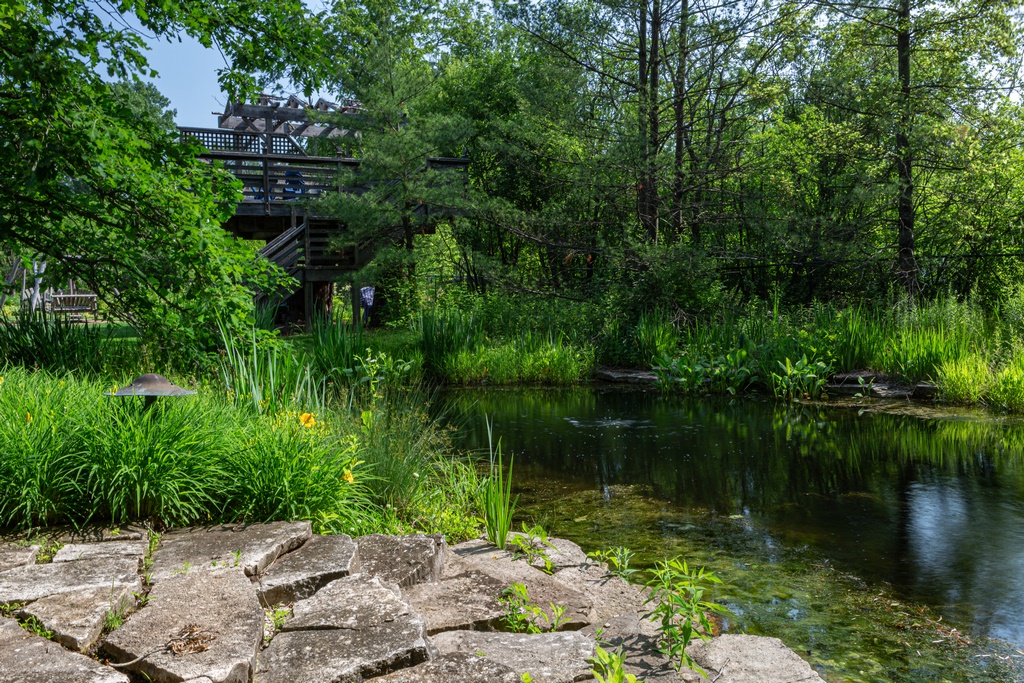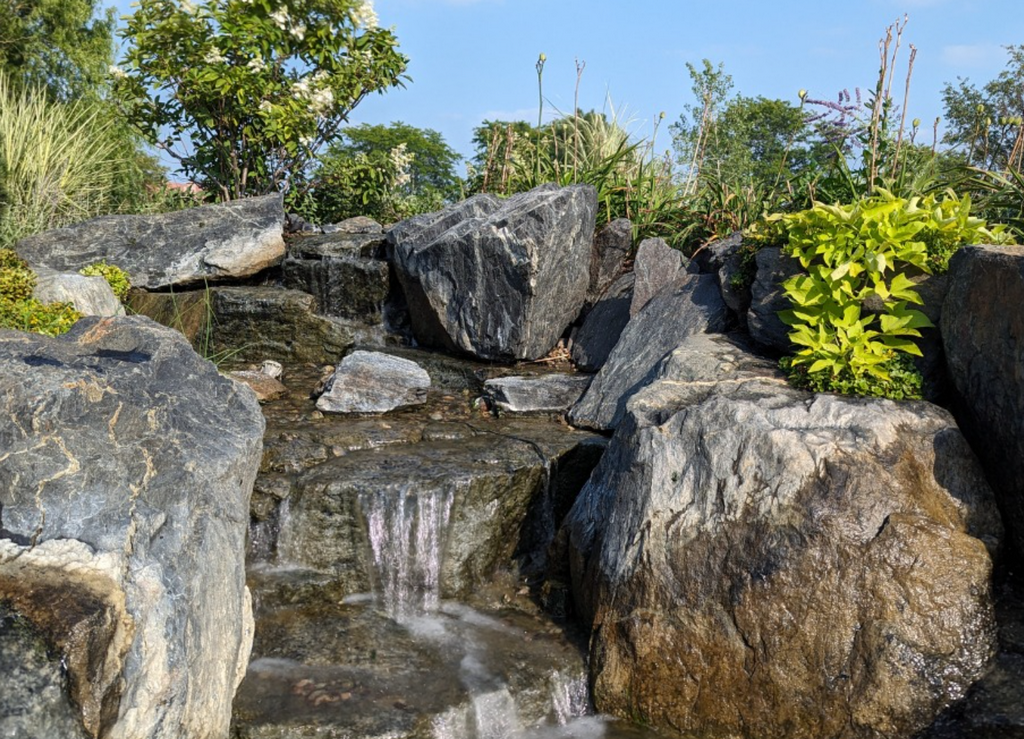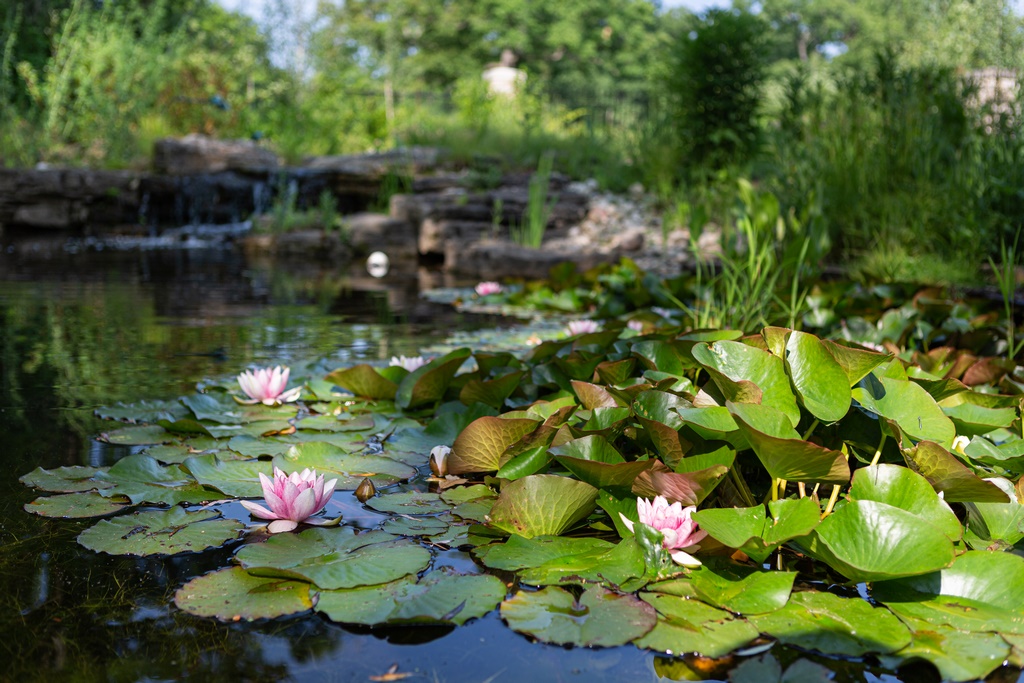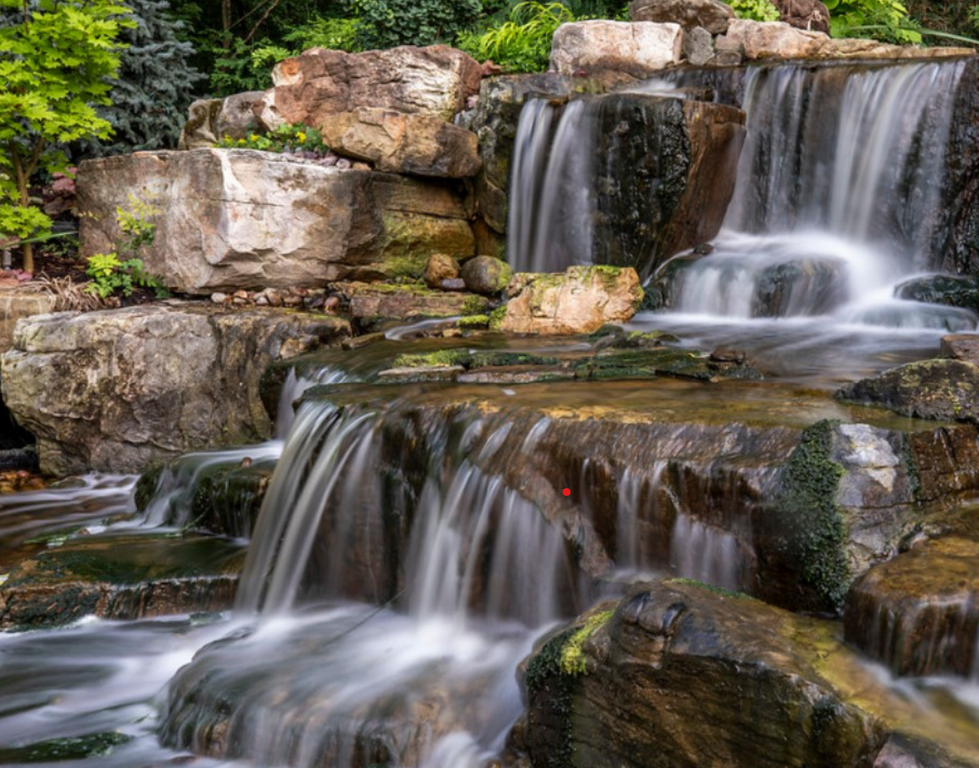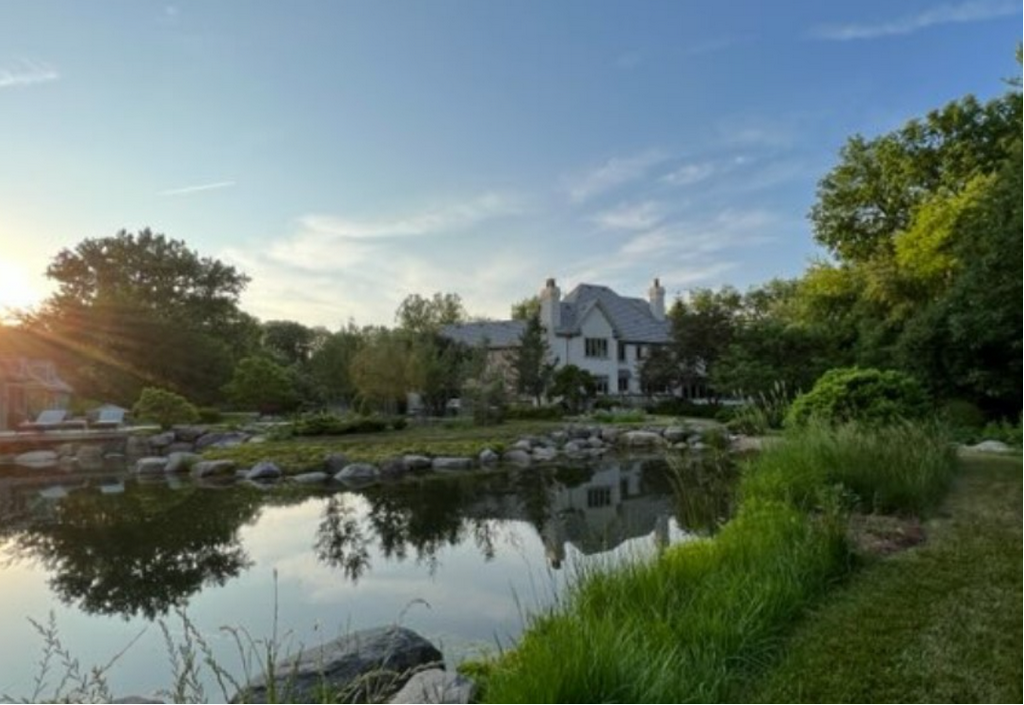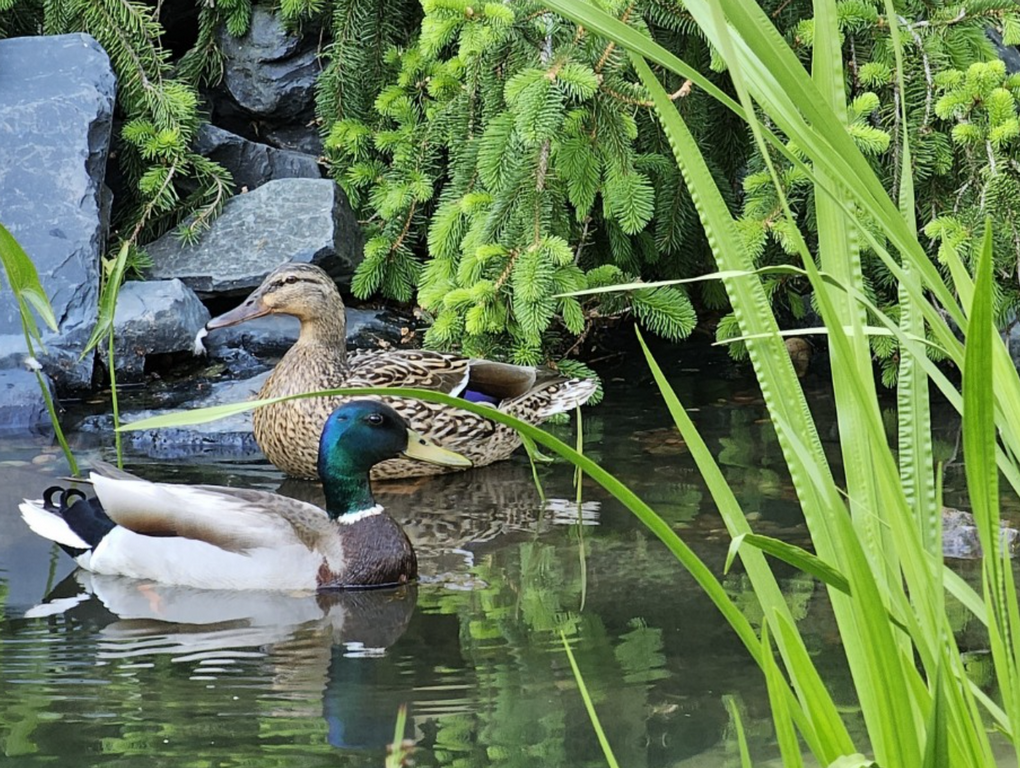Nature Made by Design
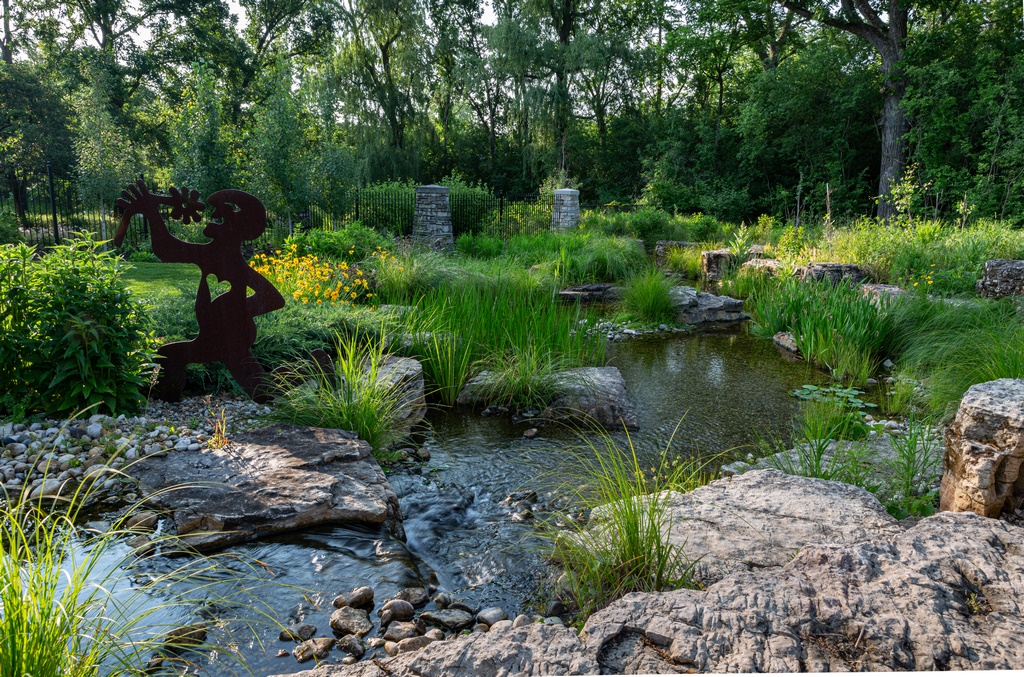
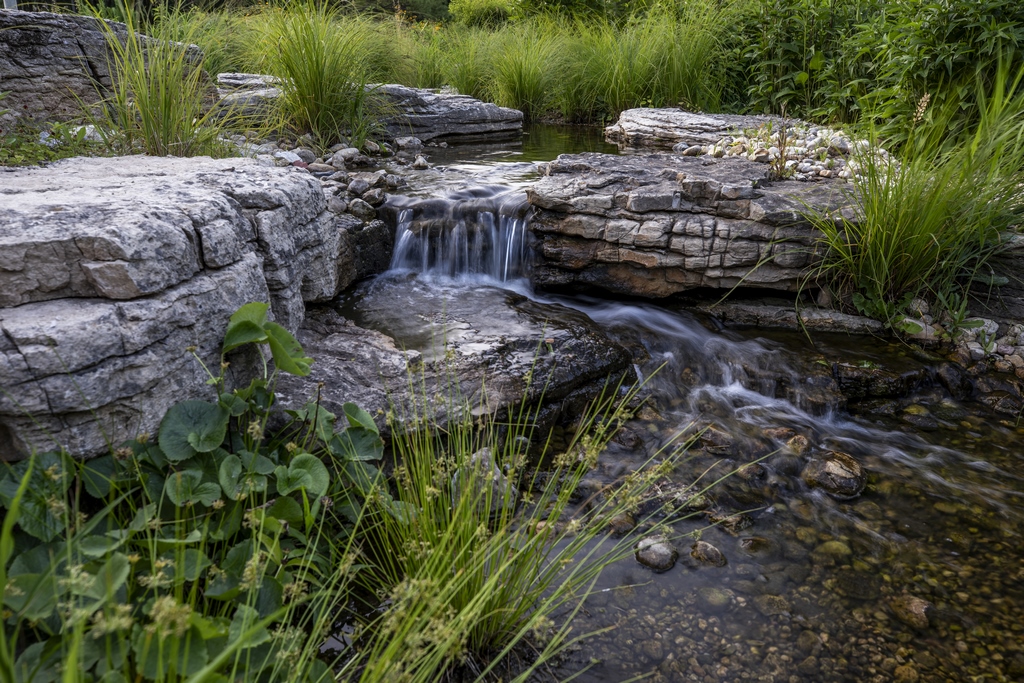
According to pond specialist, Larry Carnes, in order to mimic nature when designing and building ponds, waterfalls and streams, the process involves a comprehensive understanding of geological principles, the plant kingdom, water treatment, and how to avoid telltale mistakes.
By Larry Carnes
Creating a natural-looking pond is not just about assembling rocks and water—it’s a process that involves sculpting a scene that seamlessly blends into its surroundings.
Every stone, plant and, of course, the water itself play an important role in creating a convincing environment. Like all types of watershape design, the process starts with both the clients and the site; from there you also need a comprehensive and intuitive understanding of how the natural world works.
Here are some of the keys to craft watershapes that look like nature made them.
UNDERSTANDING NATURAL SYSTEMS
It’s impossible to overstate the importance of studying natural bodies of water. By drawing inspiration from lakes, rivers, ponds and streams, and how they influence the landscape, watershapers can approach the challenge of emulating the beauty, functionality, and ecological integrity in man-made environments.
Nature operates according to intricate systems and processes that govern the formation and maintenance of ponds and streams. From hydrological cycles to the interplay of factors such as water flow, substrate composition, plant communities, and even wildlife habitats, all of that research comes into play during the planning and installation process.
By actively observing natural systems, watershapers can select appropriate aquatic and terrestrial plants, stone materials to create diverse habitats. This, in turn, supports a range of species, from amphibians and insects, to fish and birds, and especially us humans.
Keep in mind, the details happen on site, not on a plan sheet. There’s an improvisational aspect to the process. Time spent actively studying and appreciating natural rock formations, the way certain types of plants grown in and around rocks, and how water interacts with all of it provides the ultimate inspiration.
STONE STRATEGIES
At the heart of the process lies the careful selection and placement of natural stone formations.
Rock selection and placement requires active visualization. By choosing stones that mirror the geology of the area, you help ensure that the pond appears as though it has always been there. From rugged boulders to field stone to weathered cobbles, every piece should be meticulously arranged to mimic the local natural landscape and geology.
And, you do have to be vigilant to avoid visual missteps that disrupt the natural impression. The dreaded string-of-pearls rocks along the edge, for example, or formations that appear suspiciously architectural. Keep in mind that in nature, you rarely see a perfectly straight weir or perfectly symmetrical cascades; nor do you see the same size and shape stones lined up in a perfect row along the water’s edge.
I’ll take clusters of rock and place them together to make it appear as one formation. And then, in between the cracks, we place gravel and soil, to support plants, making it appear that they are growing out of the rock.
We’ll also take groupings of stone and rebury them to the soil line, just as they were found in nature, giving the appearance the rock is what you’re seeing, but it’s part of a much larger underground structure.
Scale is extremely important and can be used to tremendous effect. That often means upsizing rock formations. Again, looking at nature, we often see large structures emerging from the ground that are next to comparatively small streams, waterfalls and ponds.
We’re always selecting stones of differing shapes and sizes with different uses in mind. Flat stones are useful for a variety of purposes from waterfalls to edge access or even steps. Pieces with interesting veining and colors can be effective focal points and stones with vertical structures for slopes, cascades and backdrops.
The installation process means both following a general plan, but also improvising on site based on the stones themselves. It’s like a big puzzle; and, again, understanding natural geology is vital to achieving realism.
PLANTING PLANS
A similar type of thinking applies to planting designs. Through strategic placement of planting pockets in shallow shelves along the edge, within rock structures and even in small islands, we blur the lines between land and water, again giving the appearance that the plants occurred naturally.
Realistic planting designs require blending plants of different types in a way that you might see them on a hike by a pond or stream. There are layers of ground covers, vines and shrubs, flowering plants and, of course, trees. Plantings in groups or stands often appears more natural than alternating individual plantings, which can look artificially busy and planned.
In some situations, we’ll design big swaths of beds, especially if we’re not bringing sod to the edge. We’ll create a big planter proximate to the edge and plant loads of whatever is appropriate for that area. In the water, we make a huge pot with a liner and then put the excavated soil back in the pot, which is where we plant our lotus and water lilies.
Then we’ll fill in the rest with gravels and do our marginals for the shallower areas. It’s a beautiful look.
We’ll vary the edges depending on the design using plants, turf and stone. If you’re trying to achieve an alpine look, you’re going to have a lot of big rock formations. If you’re in a prairie setting, you probably won’t have as many rock formations and you’re probably bringing turf right to the water’s edge. In a more tropic or forest setting, we’ll include all sorts of lush plantings in and out of the water.
WATER IN MOTION
Waterfalls are often the visual centerpieces of our ponds. Crafted with precision, they cascade over rugged rocks or offer a subtle rivulet of water, and everything between. Not only do they provide the sound of moving water, they also oxygenate the water, helping ensure clarity and a healthy living environment.
A subject unto itself, waterfalls are living sculptures that bring plants, rocks and water together in a vertical dimension. They can be used to create beautiful backdrops, or they can be front and center commanding attention.
Likewise, crafting streams is its own watershaping category with numerous specific considerations. Among them, creating natural looking edges when rock and plant material are fused into the surrounding landscape is all-important. So, too, managing vertical transitions with natural-looking irregular cascades will be far more convincing than straight weirs and segmented steps.
Superior water quality is the most important factor of all. Through advanced filtration systems and eco-friendly practices, we maintain crystal-clear waters that mirror the azure skies above and let you see into the water’s depths.
Naturalistic shapes are essential in our pursuit of authenticity. Gone are the days of cookie-cutter ponds with perfectly symmetrical edges. Instead, we carve irregular contours and asymmetrical curves.
MANAGING VIEWS
While thinking about nature is a constant part of the process, so too is considering the human experience. The size, shape and location of the water is the first step in determining how people will experience it. Whether viewed from inside the house or within the garden, a well-designed pond invites contemplation, connection, and natural rejuvenation.
From the vantage point of a house, the use of perspective involves framing the pond as a focal point within the interior, drawing the eyes outward to the water and surrounding greenery. Large windows, glass doors, or even strategically placed mirrors can be employed to create a seamless connection between the indoor living space and the outdoor pond environment.
Moreover, the placement of the pond relative to the interior layout can be used to great effect. A pond strategically positioned in line with prominent interior features, such as a fireplace or a seating area, kitchen window or from a dining room table can serve as a backdrop, enhancing the overall ambiance and visual appeal of the interior space.
Outdoors, the art of perspective can be used to create visual connections and reward moving from one place to another. Shifting viewpoints, achieved through thoughtful placement of paths, bridges, and landscaping elements, allow visitors to experience the pond from different angles and elevations, each offering a unique perspective and sensory experience.
As an example, a winding pathway leading to a secluded alcove overlooking the pond can evoke a sense of anticipation and discovery, gradually revealing new viewpoints and hidden details along the way. Similarly, strategically positioned seating areas or observation decks provide opportunities for contemplation and immersion in the sights and sounds of the water garden.
The incorporation of focal points and design elements that draw the eye towards the pond can enhance its visual prominence within the landscape. Whether through the strategic placement of sculptural elements, accent lighting, or carefully curated plantings, designers can manipulate perspective to emphasize the pond as a central feature and anchor point within the outdoor environment.
IN THE DETAILS
Achieving naturalism, like many things, often comes down to the details.
One major example, concealing the water’s source, is key. Through landscaping and strategic placement of rocks and vegetation and, again, keeping site lines in mind, we’ll always conceal the water’s source. A stream might start behind a rock formation, or maybe the water wells up over the weir of a waterfall.
Likewise, the bottom of the pond is part of the scene — being sand, cobble or large rocks — we layer these materials to create realistic pond bottoms, complete with varying slopes and hidden crevices.
Adding pieces of fallen trees can further add to the realism. As mentioned above with stone, so, too, size matters. Placing a small branch across a stream will just look messy, like someone needs to do some yardwork. A fallen tree trunk will look far more realistic.
In the art and craft of making ponds look natural, every element plays a crucial role. It’s true no one can truly replicate nature, but it is always fun to try.
Larry Carnes is owner of Reflection Water Gardens in West Dundee, Ill. He began is career as a student of art and developed an interest in landscaping. He worked for several companies, gaining knowledge in tree care, patio design and installation, and landscape architecture. Now a devoted student of naturalistic watershape design, Carnes strives to create ponds and water features that qualify as art.










